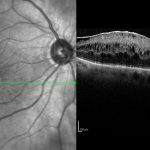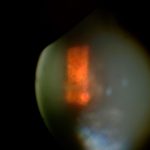Posterior Vitreous Detachment (PVD)
What is a posterior vitreous detachment?
The back of the eye is filled with a clear jelly called Vitreous. It is normally firmly attached to the lining of the eye (retina). Over time, the vitreous shrinks and pulls away from the retina, which may float in the middle of the eye. This is called a posterior vitreous separation.
What is causing my floater?
Small fibers in the floating jelly can cast a shadow on the retina. This is what you are seeing as floaters. People often describe this as “a cobweb”, “a black blob”, “a hair”, or “a fly in the eye”. You may even have tried to brush or wash it away.
Why am I seeing flashing lights?
Some patients with a posterior vitreous separation see flashing lights, especially in the dark; this is simply due to the jelly tugging on the retina, as it pulls away. This will mostly stop within a matter of a few weeks.
Is there any treatment for my posterior vitreous separation?
For most people posterior vitreous separation is normal part of getting older. A posterior vitreous separation can occur in younger patients, but these individuals tend to be very short-sighted (High Myopia), or have other eye diseases.
So am I going to have my floater forever?
You will probably find it quite annoying at first, particularly when reading, for instance. But you will get used to it with the passage of time. Some people even learn to ignore it altogether.
Is a posterior vitreous separation ever serious?
Occasionally, if the vitreous is tightly attached to the retina, a retinal tear may occur. This may lead to a condition call “Retinal Detachment”. A detached retina may result in blindness if not treated by surgery within a week or so.
How do I know I have a tear in the retina?
If you get any of these symptoms, you should call the hospital without delay:
- Increase in floaters/ flashes
- Reduced vision
- The appearance of a curtain blocking part of your vision



